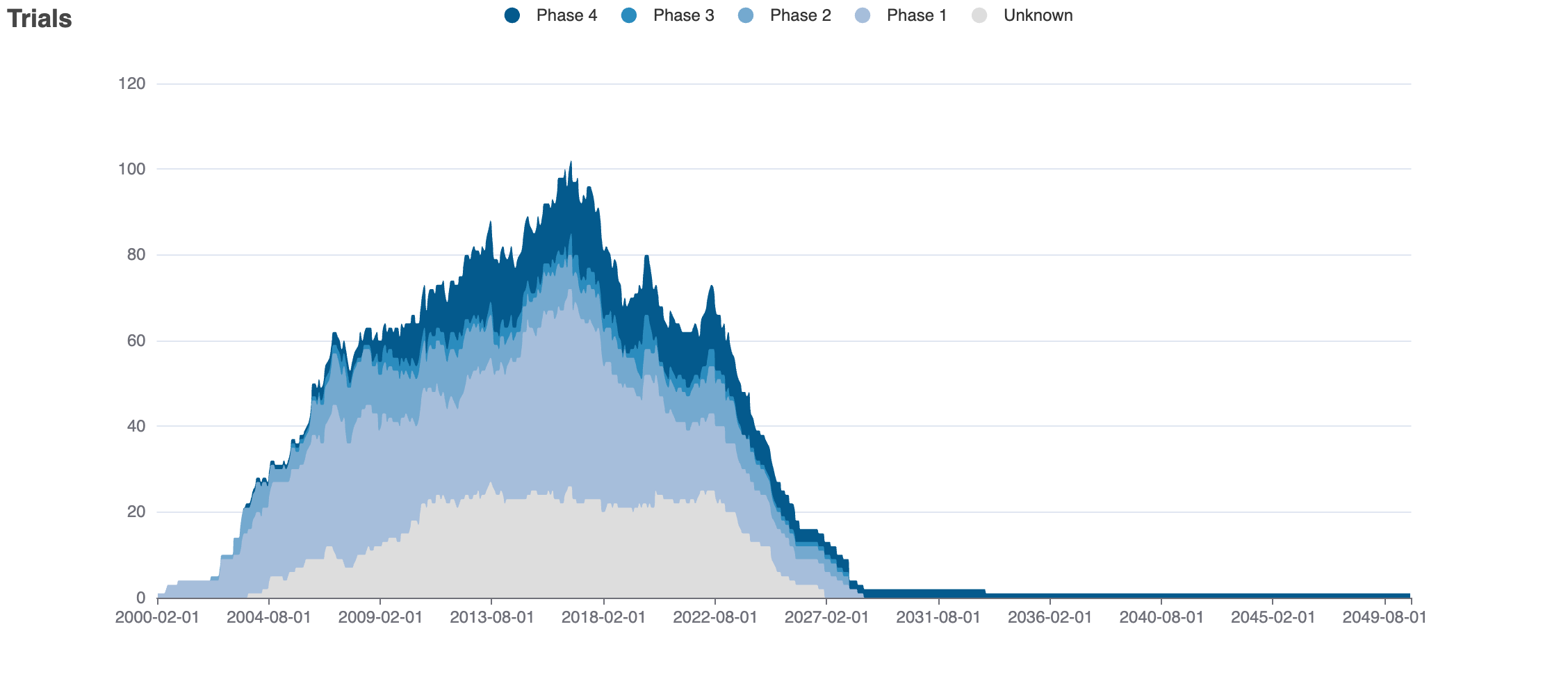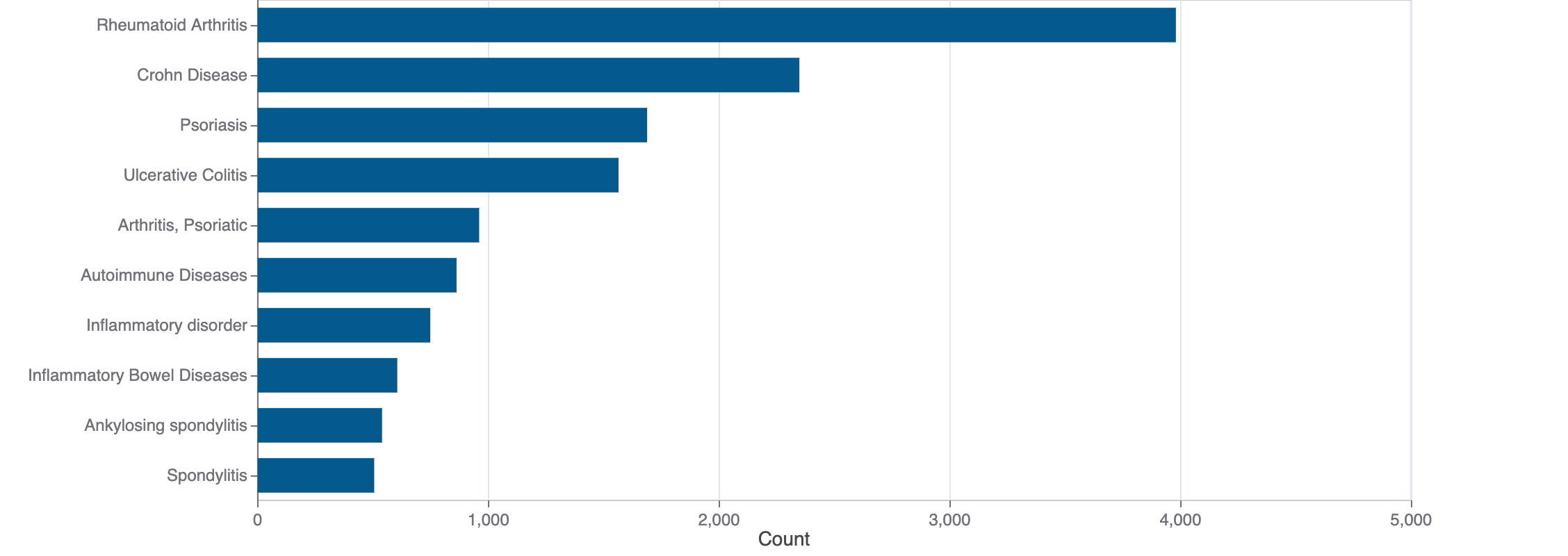Dinoprostone
Cervidil, Prepidil (dinoprostone) is a small molecule pharmaceutical. Dinoprostone was first approved as Prostin e2 on 1982-01-01. It is used to treat fetal death, gestational trophoblastic disease, and uterine neoplasms in the USA.
Download report
Favorite
Events Timeline
Commercial
Clinical
Drug
Target
Variants
Financial
Trends
Safety
Events Timeline
5D
1M
3M
6M
YTD
1Y
2Y
5Y
Max
Events
FDA approval date
EMA approval date
Patent expiration date
Study first post date
Last update post date
Start date
Primary completion date
Completion date
Results first post date

Mock data
Subscribe for the real data
Subscribe for the real data
Commercial
Therapeutic Areas
Trade Name
FDA
EMA
Cervidil, Prepidil (discontinued: Prostin e2)
Drug Products
FDA
EMA
New Drug Application (NDA)
New Drug Application (NDA)
Abbreviated New Drug Application (ANDA)
Abbreviated New Drug Application (ANDA)
Dinoprostone
Tradename | Company | Number | Date | Products |
|---|---|---|---|---|
| CERVIDIL | Ferring Pharmaceuticals | N-020411 RX | 1995-03-30 | 1 products, RLD, RS |
| PREPIDIL | Pfizer | N-019617 RX | 1992-12-09 | 1 products, RLD, RS |
Show 1 discontinued
Indications
FDA
EMA
Indication | Ontology | MeSH | ICD-10 |
|---|---|---|---|
| uterine neoplasms | EFO_0003859 | D014594 | C55 |
| gestational trophoblastic disease | — | D031901 | O01.9 |
| fetal death | — | D005313 | — |
Agency Specific
FDA
EMA
No data
Patent Expiration
No data
HCPCS
No data
Clinical
Clinical Trials
183 clinical trials
View more details

Mock data
Subscribe for the real data
Subscribe for the real data
Indications Phases 4
Indication | MeSH | Ontology | ICD-10 | Ph 1 | Ph 2 | Ph 3 | Ph 4 | Other | Total |
|---|---|---|---|---|---|---|---|---|---|
| Cesarean section | D002585 | — | — | — | — | — | 1 | — | 1 |
| Obstetric delivery | D036861 | — | — | — | — | — | 1 | — | 1 |
Indications Phases 3
Indication | MeSH | Ontology | ICD-10 | Ph 1 | Ph 2 | Ph 3 | Ph 4 | Other | Total |
|---|---|---|---|---|---|---|---|---|---|
| Cervical ripening | D020070 | — | — | — | — | 4 | — | 2 | 6 |
| Induced labor | D007751 | — | — | — | — | 2 | — | 1 | 3 |
Indications Phases 2
No data
Indications Phases 1
No data
Indications Without Phase
Indication | MeSH | Ontology | ICD-10 | Ph 1 | Ph 2 | Ph 3 | Ph 4 | Other | Total |
|---|---|---|---|---|---|---|---|---|---|
| Pregnancy | D011247 | EFO_0002950 | Z33.1 | — | — | — | — | 1 | 1 |
Epidemiology
Epidemiological information for investigational and approved indications
View more details
Drug
General
| Drug common name | Dinoprostone |
| INN | dinoprostone |
| Description | Prostaglandin E2 is prostaglandin F2alpha in which the hydroxy group at position 9 has been oxidised to the corresponding ketone. Prostaglandin E2 is the most common and most biologically potent of mammalian prostaglandins. It has a role as an oxytocic, a human metabolite and a mouse metabolite. It is a conjugate acid of a prostaglandin E2(1-). |
| Classification | Small molecule |
| Drug class | prostaglandins |
| Image (chem structure or protein) |  |
| Structure (InChI/SMILES or Protein Sequence) | CCCCC[C@H](O)/C=C/[C@H]1[C@H](O)CC(=O)[C@@H]1C/C=C\CCCC(=O)O |
Identifiers
| PDB | — |
| CAS-ID | 363-24-6 |
| RxCUI | — |
| ChEMBL ID | CHEMBL548 |
| ChEBI ID | 15551 |
| PubChem CID | 5280360 |
| DrugBank | DB00917 |
| UNII ID | K7Q1JQR04M (ChemIDplus, GSRS) |
Target
No data
Variants
No data
Financial
No data
Trends
PubMed Central
Top Terms for Disease or Syndrome:

Mock data
Subscribe for the real data
Subscribe for the real data
Additional graphs summarizing 16,114 documents
View more details
Safety
Black-box Warning
No Black-box warning
Adverse Events
Top Adverse Reactions

Mock data
Subscribe for the real data
Subscribe for the real data
1,312 adverse events reported
View more details
© 2020-2025 Collaborative Drug Discovery Inc. (CDD) | Terms of Use